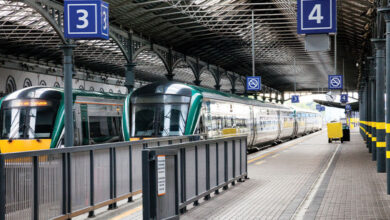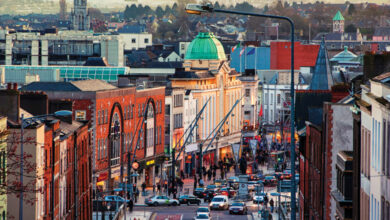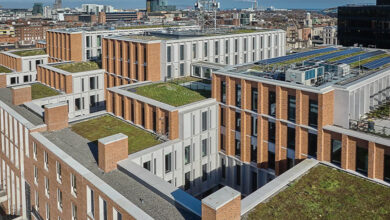Rejuvenating Dublin city centre
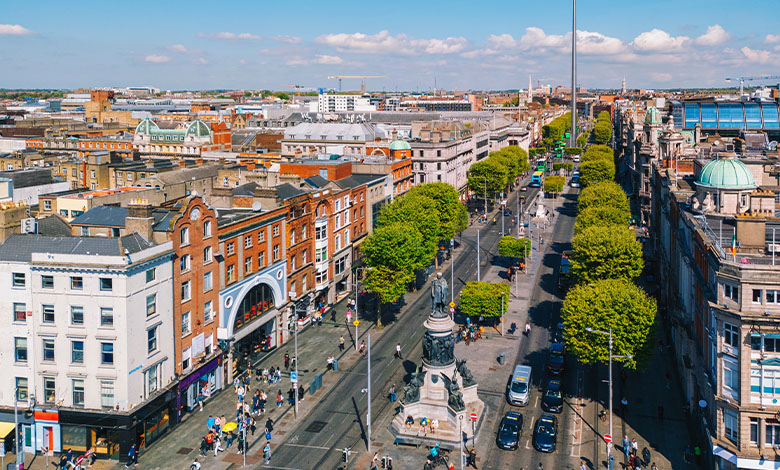
A plan to rejuvenate Dublin city centre by increasing the number of residents, making streets cleaner and safer, and creating a “healthy, vibrant, always-on city that respects its heritage” is outlined in the Roadmap for Delivery: Dublin City Taskforce Report, published in June 2025.
It builds on the Dublin City Taskforce Report, published in October 2024, which asserts that since the global financial crisis and Covid-19 pandemic, Dublin “feels less safe, is heavily littered, and is visibly rundown”. The taskforce report outlines the following 10 action areas to rejuvenate the city:
- revitalise O’Connell Street and environs;
- prioritise regeneration of social housing complexes;
- convert derelict sites into high-density residential with provision for essential workers;
- make policing and security more visible and add 1,000 more gardaí;
- deliver more targeted and better located services for vulnerable populations in the city centre;
- implement a dedicated waste management plan for the city centre;
- operate the City Centre Transport Plan;
- offer Dubliners compelling reasons to visit the city centre;
- create a marketing and communications function for Dublin; and
- evolve appropriate governance for a capital city.
As outlined in the roadmap report, the rejuvenation project will be rolled out in three phases between 2025 and 2035, delivered by the Department of the Taoiseach. Phase one spans from 2025-26, phase two from 2027-30, and phase three from 2031-35. The roadmap is underpinned by five strands.
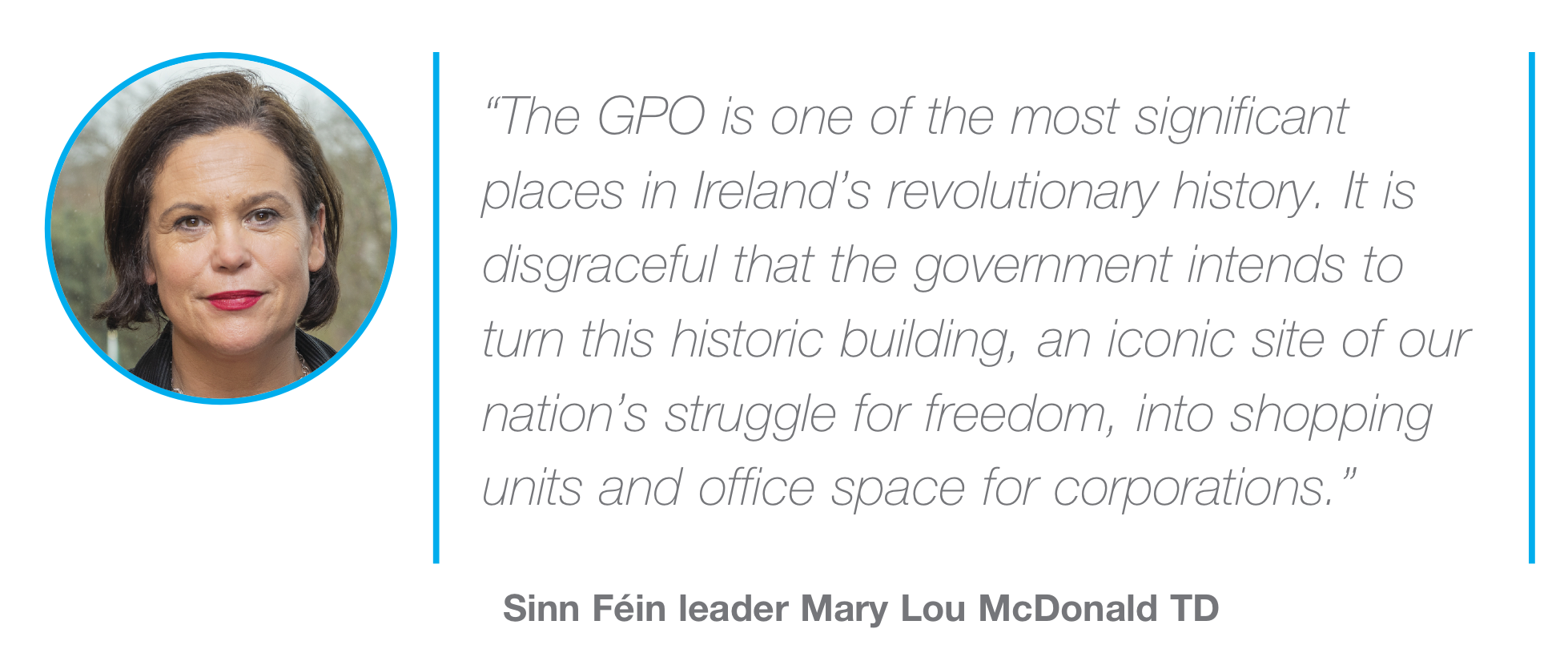
GPO redevelopment
The redevelopment of the GPO is the most significant project outlined under the roadmap. This is to be enabled by the creation of a 10-year Integrated Area Strategy. The Report of the Interdepartmental Group on the Dublin City Taskforce, published in tandem with the roadmap, asserts: “The future GPO should be developed as a mixed-use precinct incorporating some, or all of the following:
- public realm enhancements at street level to encourage public use of the complex;
- retention of a post office function;
- reimagined retail components along Henry Street and in the GPO Arcade;
- a significant cultural use(s); and
- high quality office element on the upper floors to provide critical accommodation to meet ongoing and additional government requirements.”
Under phase one, the title of the landmark is set to transfer to the Office of Public Works. Upon publication of the roadmap, Sinn Féin leader Mary Lou McDonald TD said: “The GPO is one of the most significant places in Ireland’s revolutionary history. It is disgraceful that the Government intends to turn this historic building, an iconic site of our nation’s struggle for freedom, into shopping units and office space for corporations.”
During a Dáil Éireann debate on 26 June 2025, in response to criticism on the proposed redevelopment of the GPO by Sinn Féin TD Pearse Doherty, Tánaiste Simon Harris TD said: “The GPO is always going to be preserved under this plan as the historic cultural institution it is.”
Culture, cleanliness, and community support
The roadmap outlines intentions to create a cultural hub in line with the GPO redevelopment. This aim will be informed by an audit of cultural landmarks, performance spaces, interactive installations, and exhibition areas under phase one. The roadmap plots ambitions to expand late opening hours in Henry Street, and weekend and evening opening of cultural institutions to deliver this.
To improve cleanliness in the city centre, the roadmap recommends that new waste collection systems be implemented under phase one. It also insists that additional cleaning and waste management services be rolled out in phase two to ensure full compliance of the commercial centre with waste prevention byelaws.
The report sets targets that Dublin city improve its ranking in the Irish Business Against Litter reports, 80 per cent of the deposit return scheme be attained, and that on-street bagged waste restrictions be imposed.
Under the heading of ‘enhancing community support’ the report asserts that existing services and facilities be audited, and a register of existing facilities in the core area be created. It also includes aims to relocate city centre emergency accommodation “where possible and appropriate”, source appropriate areas for emergency accommodation in the Greater Dublin Area and nationwide, and introduce a moratorium for the purchase, lease, and operating of contracts for new emergency accommodation in the core area.
Phase two contains ambitions to create a central registry of new accommodation offers, and the provision of on-street services for homeless people. Phase three includes plans to “curb new emergency/temporary accommodation for vulnerable groups located in the area”, while ensuring day service facilities are provided for vulnerable populations.
Engines and enablers
The report identifies the establishment of a Legal Implementation Body by Dublin City Council as key to deliver the aims. It does not state when this body will be put in place but asserts that an interim PMO will need to be appointed until then. Other immediate actions to be taken include the establishment of an Oversight Board, and preparation of a scoping paper to outline options for the Legal Implementation Body.
The Dublin City Taskforce Report states that the plan will require between €750 million and €1 billion in capital funding, as well as between €100 million and €150 million in annual operational funding. Over the 10-year of the roadmap, this would amount to between €1.75 billion and €2.5 billion.

